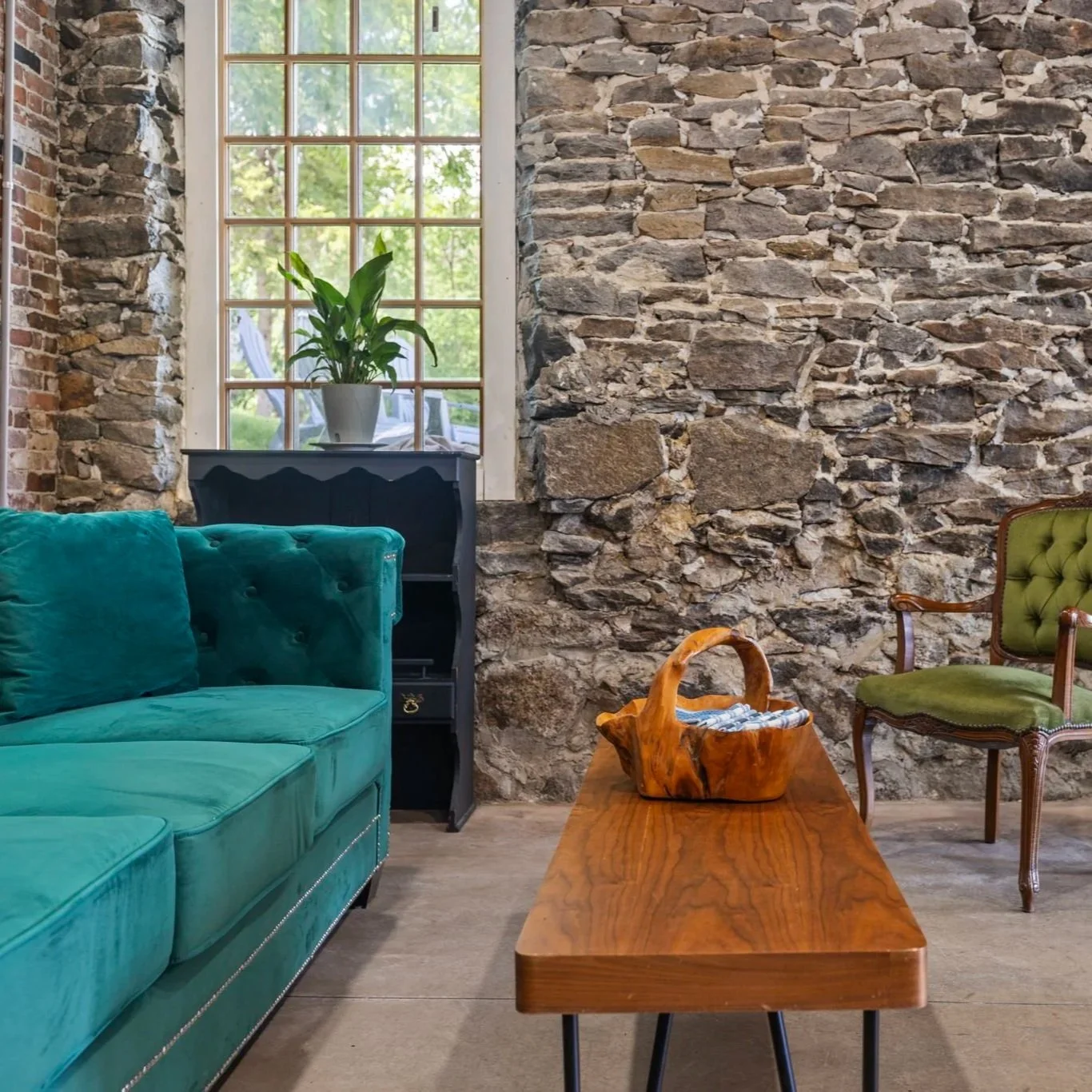The Howland-Gould General Store: Breathing New Life into a Village Landmark
At the heart of many New England villages sits a general store — a place where commerce, community, and conversation wove together the rhythm of daily life. In Hope, Rhode Island, that place was the Howland-Gould General Store. Nearly 200 years later, the building still stands proudly, a granite-and-timber witness to generations of farmers, millworkers, and neighbors who once passed through its doors.
Today, I have the privilege of caring for this historic property, now named The Hope Collective — a fully restored 1826 Greek Revival building that was once the life-blood of this community. What was once a store filled with barrels of flour and bolts of calico is now a home, a garden, and a gathering place that continues to carry forward its legacy of connection.
When you step onto the property, you immediately feel its history. The foundation is built from Westerly granite, a reminder of the hand labor that defined early Rhode Island life. To the back of our office space, the original root cellar still holds its coolness, a space that once kept apples crisp, potatoes dry, and cider sweet through long winters. It’s humbling to imagine neighbors meeting here, bartering, settling their tabs after harvest, or sharing a laugh before heading back to their farms or the mills.
The Howland-Gould General Store was more than a place to shop — it was where the community came together. People lined up on its wide-plank floors to buy supplies, swap stories, and learn the latest news from Providence. In an era before supermarkets, this was the spot where Hope’s identity was forged: a place where everyone — farmers, mill owners, and mill hands alike — stood shoulder-to-shoulder, working out the business of daily life.
By the early 20th century, like so many general stores, the building’s role began to change. Grocery store chains and the rise of the automobile altered shopping patterns. Many of these old mercantile hubs were left to fade. But this one endured — and today, it has been lovingly restored to honor its history while embracing its next chapter as an event space.
Caring for this property has become a true passion project for me and Jess. Every day, I notice some new detail — the way the afternoon sun falls on the enormous maple trees, the sturdiness of the granite walls, the echo of the building’s original purpose. Jess has worked to preserve the house true to its 19th-century soul, even as we’ve brought in modern comforts like a bright, modern meeting space and year-round climate control. The gardens above the granite wall are being replanted and tended, allowing them to be enjoyed once again, continuing the store’s deep connection to the land.
Visitors often tell me that walking through the property feels like stepping back in time — but with a sense of warmth and welcome. And that’s exactly what we hoped for. This building was always meant to bring people together, and it still does, just in a slightly different way. Where once a shopkeeper asked, “What can I get for you today?” I now invite friends, neighbors, and guests to experience the history of this special place, to sit in the garden with a cup of coffee, to feel the cool stone of the root cellar, and to imagine all the lives that have passed through here.
Preserving places, like The Hope Collective, matters because they keep the human story of a village alive. They remind us that community was once something you could touch — a handshake, a bartered trade, a shared conversation by the counter. Standing in a place where goods were tallied by hand and neighbors were known by name is a powerful reminder of what still connects us today.
Hope has always been a place of resilience, and this building reflects that spirit. Nearly 200 years later, The Hope Collective continues to serve its original purpose: holding space for connection, memory, and the enduring character of a New England village.
If you find yourself in Hope, take a moment to pause and admire the old stonework, the sweeping lines of the Greek Revival facade, and the developing gardens. History lives here — and it’s waiting to welcome you.
Settle in to our cozy office for a call, a meeting, or a get-together.

